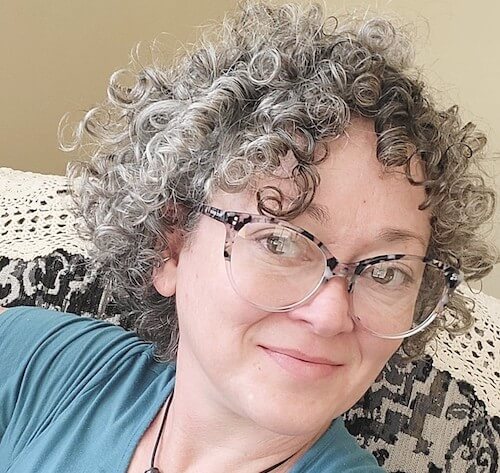It's no secret that it can be tricky to care for and style fine hair. And unfortunately, without the right hair care routine and products, fine-textured hair can become most unflattering — from oily, lifeless hair characterized by greasy, limp strands to damaged hair that's frizzy and dry.
The good news is that you can take action now to prevent or resolve fine hair issues. Read on to find out how to best care for fine hair, including what products you should use to help your hair look and feel its best.
#include-related-slider#
Fine Hair vs. Thin Hair
Fine hair and thin hair are not the same. Thin hair refers to density or the amount of hair you have on your head as a whole, while fine hair refers to the texture of each individual strand or hair shaft.
How to Tell If You Have Thin Hair
Here's how to tell if your hair's density is thin.
- Start with dry hair.
- Check the hairline, crown, and other areas on your head.
- Are you able to see your scalp easily through your hair? If so, you likely have a thin density of hair.
Note that it is possible to have fine and thin hair. But having thin hair does not mean that your hair is considered fine.
Shop: VEGAMOUR's Best Sellers
How to Tell If you Have Fine Hair
Fine hair is not a hair type, such as wavy hair, curly hair or straight hair. Instead, it's a texture that is characterized by individual hair shafts that are small in diameter. To determine if your hair is fine-textured, hold up one of your hairs to the light and roll it between your fingers. If you can barely see the hair and feel it between your fingers, then chances are you have fine strands of hair.
Related: What's Your Hair Texture and Type?
The Structure of Fine Hair
Fine hair is structurally different from thicker hair. Fine hair, for the most part, is missing the innermost structure of the hair follicle called the medulla. This means that finer hair follicles need more careful care and styling techniques to protect the delicate strands.
The hair's outermost structural layer, known as the cuticle, can also play a role in the condition and appearance of fine hair. Fine hair that is damaged, for example, will take up more space than fine hair that is healthy, which may give the impression of a thicker head of hair.
What Fine Hair Requires
Hair care for fine hair isn't complicated, but it is important to understand what your fine hair needs from you. Analyze the health of your hair. Do you see split ends? Does the hair feel dry or look frizzy? Fine and thinning hair can be especially difficult to care for once it becomes damaged, which makes choosing the right hair care products even more important.
A deep conditioner can help damaged fine hair, but for regular use, a lightweight one is best. Also, choose styling products that add texture but aren't overly drying, as these could further damage your delicate strands. Note that some hair products targeted at people with fine hair are labeled as "volumizing." However, these products often add "volume" by ruffling the hair's cuticles, which can be damaging for fine hair. That said, there are legit volumizing hair products that won't damage your hair regardless of how thick it is.
To give your fine hair all the extra help it needs, without weighing it down, drying it out or wreaking havoc on its cuticles, choose your favorite VEGAMOUR shampoo & conditioner. Here are some of the benefits of these proprietary formulas:
- Color-safe
- Lightweight
- Moisturizing and replenishing
- Enriched with our Karmatin™
- Formulated to restore hair leaving it silky soft, vibrant and voluminous
You can also treat your fine hair with a deep conditioning hair mask once a week to deeply hydrate and protect your fine hair while reducing frizz and restoring your hair's healthy appearance and texture. You simply apply the mask to freshly shampooed hair, leave it on as directed and then rinse and style as usual.
Hair Care Tips for Fine Hair
Just like all hair textures, fine hair has its own special needs. Here are some additional hair care tips that will help your fine hair thrive.
Use the Right Brush
"Regular brushing is an important routine that can help you massage the scalp to stimulate new hair growth and untangle your hair, but not every brush will work," said Monica Davis, hairstylist and founder of My Straightener. "I recommend using a soft-bristled brush to avoid stressing your strands too much."
Air Dry Your Hair or Set the Hair Dryer on Low
"Fine hair is a lot easier to damage with heat than other hair types, so it’s important to set your blow dryer on a warm or cold air preset to avoid any damage," Davis said.
It's also best to limit your use of heat styling tools and also use a heat styling protectant.
Don't Overshampoo
"If you wash your hair too often, you can trigger excess oil production in the scalp that will lead to fast-greasing hair," advised Davis. "Limit shampooing to two to three times a week for the best results."
Invest in a Pillowcase That Protects Hair
"Pure silk or satin pillowcases are a must for anyone with fine hair as they significantly reduce friction compared to average cotton pillowcases," Davis said. "Their slick surface reduces frizz, breakage and even tangling."
Learn: This Is the Best Mask for Fine Hair
Avoid Products That Contain Silicones
Silicone-free products will help you to avoid product buildup that can weigh your hair down and make it look dirty. And just so you know, all VEGAMOUR products are free from silicones. So there's that.
Be Choosy With Dry Shampoo
Dry shampoo is great to have on hand because it can be used on dry hair rather than wet hair, which can help you avoid overshampooing or frequently blow-drying with a hairdryer.
And it's OK to use dry shampoo on fine hair, but get a good one. Avoid dry shampoo that contains formaldehyde, which is unhealthy for you to use on your skin.
Get a Haircut That Flatters Your Fine Hair
The right haircut is important because it can add more volume to fine hair. For example, fine hair that's straight and all one length can appear weighed down. But you don't want too many layers, either. Instead, a lightly-layered graduated bob or a face-framing cut with some light texturizing at the crown could be good choices for fine hair. For best results, consult with an experienced stylist who can give you suggestions suited for your hair's texture.
#include-related-slider#
Make the Most of Your Fine Hair
The best approach for caring for and styling fine hair is simple: Get a flattering haircut, use the right products and go easy on the hot tools.
VEGAMOUR hair products contain carefully selected, natural ingredients that can give your fine hair exactly what it needs to look its best. Make these products a part of your regular hair care routine, and before you know it, those good-hair days you've been dreaming of will finally be within reach.
More From VEGAMOUR
- Shop: Best Sulfate-Free Shampoos for Fine Hair
- 9 Mistakes to Avoid If You Have Fine Hair
- How to Use a Hair Mask
- How to Tell If You Have Fine, Medium or Thick Hair
Photo credit: Roberto Nickson/Unsplash
Back


















